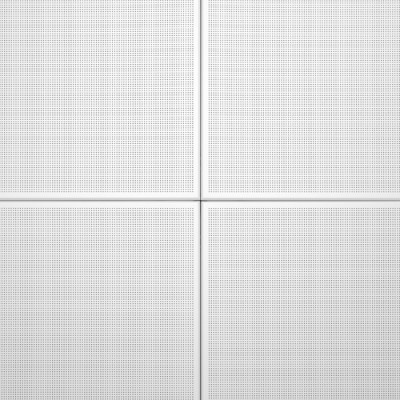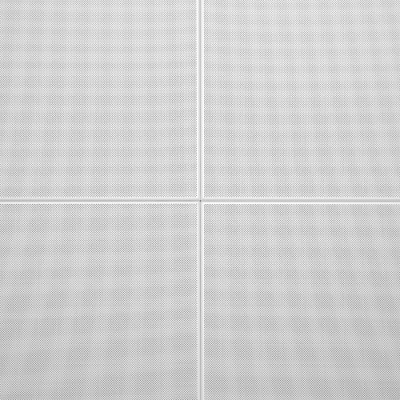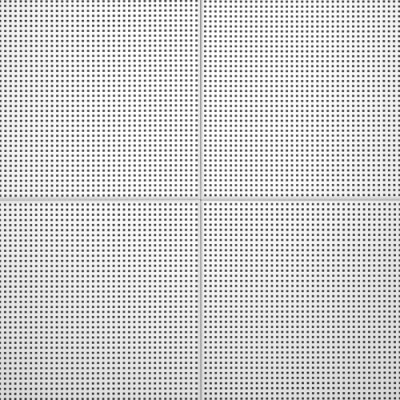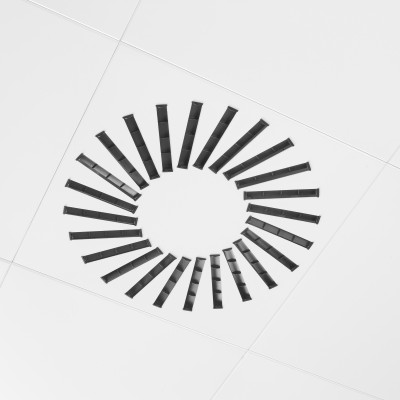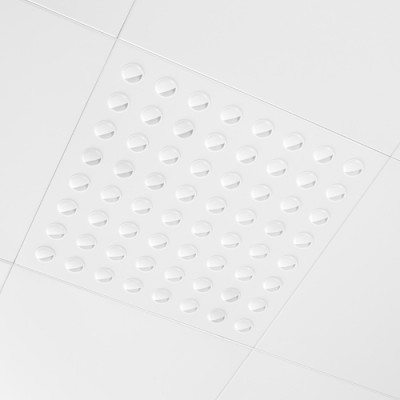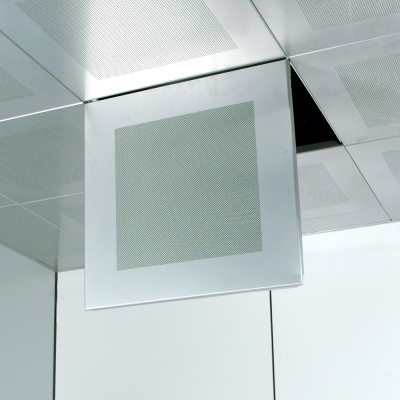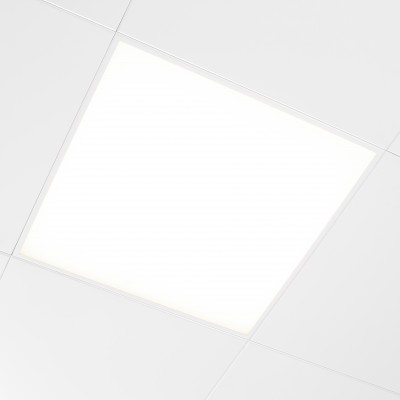45°
With the Clip-In 45° ceiling system you opt for the sleekest design. The Ceiluc Clip-In 45° ceiling is a system where the tiles are clicked into the suspension. Hence the profiles are invisible and a smooth ceiling surface is created. The four edges of the ceiling tiles are beveled at a 45° angle resulting in a V-groove between the tiles. The standard colors - metallic silver and white - are always available from stock. However you can personalize your ceiling by letting Ceilux paint the ceiling panels and edge finishing in any desired RAL-color. The ceiling tiles are easily removable so the upper plenum remains easily accessible.
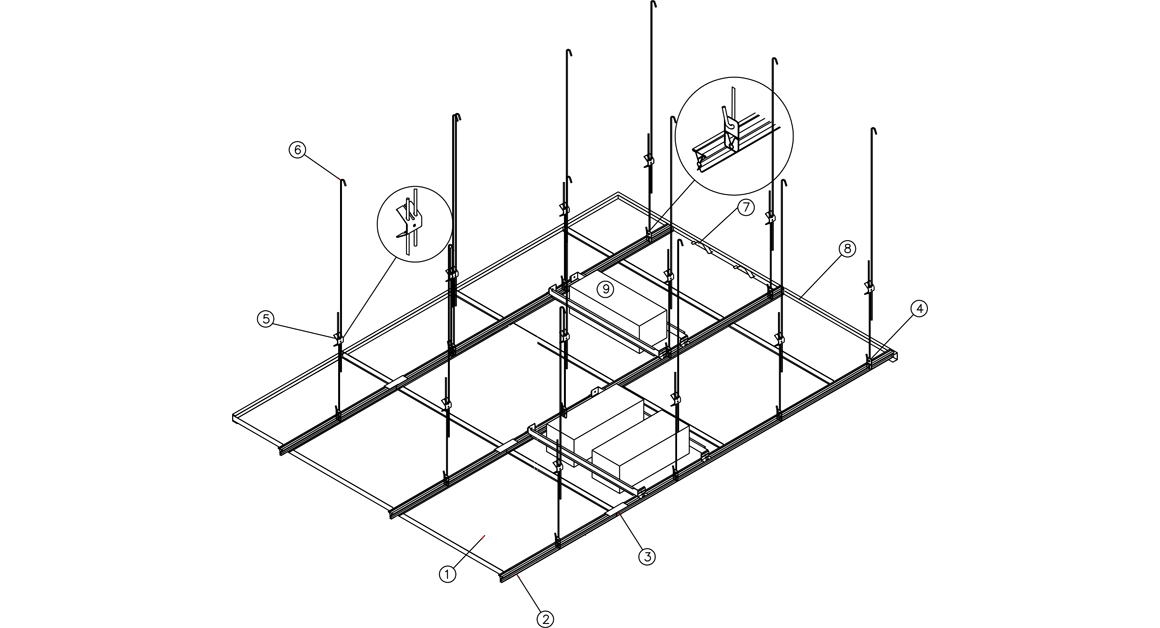
The panels are mounted into the clip-in clamping profiles with 2 by 2 pressure blocks in the edges of the panels. This clamping profile is manufactured out of cold thermally galvanised 0.6 mm thick steel, with a standard length of 4 m. These profiles can be joined with a clamping profile joint, which has to be ordered separately. The clamping profile is suspended by means of a Fred-lock suspension bracket, which has an opening on top and 3 m length suspension wires (Ø 4 mm). These wires are cut to size and bent on site, to be then suspended with adjusting springs. The spacing between each suspension point can't be bigger than 1200 mm, depending on requirements or applicable standards.
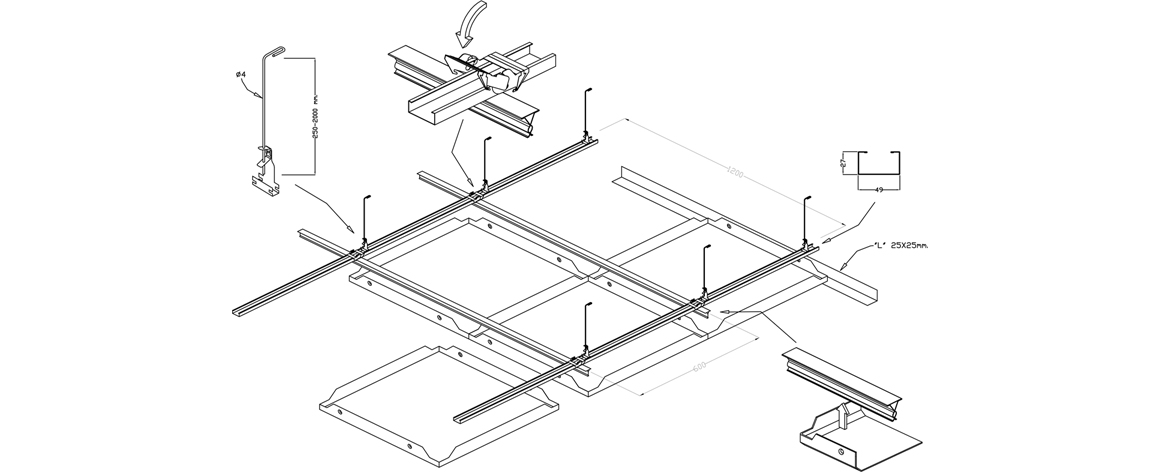
Another option is a double suspension. The primary structure is suspended by suspension wires and a suspension kit with built-in adjustable springs, to which the clip-in profile is adjusted with a bracket set. The maximum spacing between the profiles of the upper structure is 1500 mm.

The edges can be finished with an L or C profile.
When using the C profile, you can optionally order tension springs, to make sure the tiles are pressed firmly against the edge finishing. All edge finishing profiles come in a standard 3 m length. If the edges are finished with uncut tiles, you can also opt for a half clamping profile with a length of 4 m. This profile can easily be used of floating structures, in order to create a neat edge finishing. For floating structures, you can also opt for a floating C profile. This profile comes with clamping studs to be clicked in the clamping profile. On the cross-cut face, small clamping profiles have to be mounted onto which the special C-profile is clicked into place.




